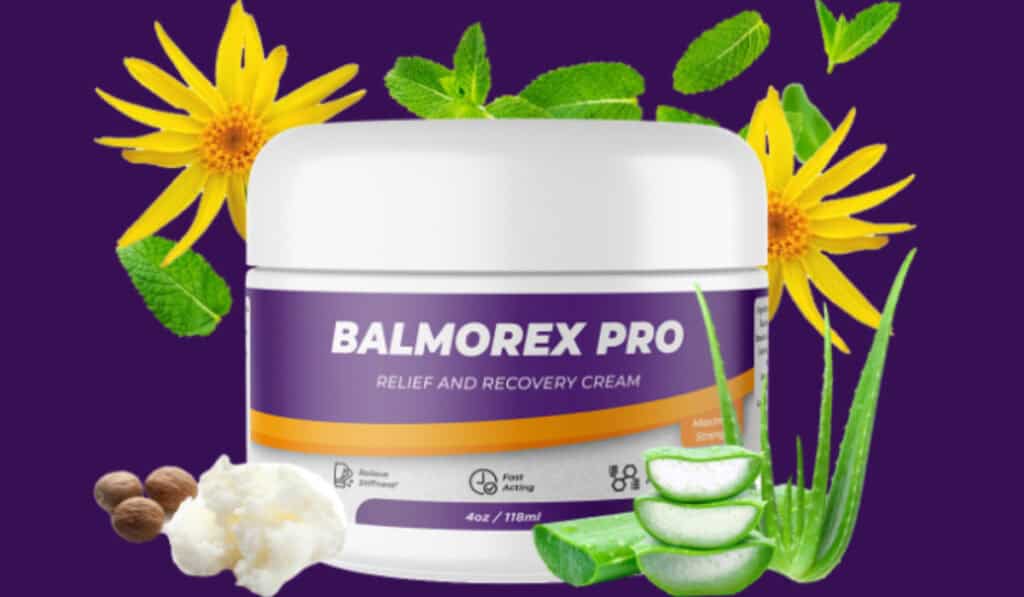A Complete Guide to Enhancing Your Movement
Moving freely and without pain is something many of us take for granted, until we face a limited range of motion. Whether it’s reaching up to grab something off a high shelf or bending down to tie your shoes, everyday activities rely heavily on our joints’ ability to move. This guide focuses on mobility exercises specifically designed to improve joint health, ensuring your body remains flexible, strong, and capable of performing daily tasks with ease.
Joint health is crucial for maintaining an active and fulfilling life. By incorporating targeted mobility exercises into your routine, you can enhance your movement, prevent injuries, and even improve your performance in physical activities. This guide will introduce you to the best exercises for keeping your joints healthy, providing you with the foundation you need to live a more mobile and pain-free life.
Understanding the Fundamentals of Joint Health
To maintain healthy joints, it’s essential to understand the balance between mobility and flexibility. An effective exercise routine should include movements that promote joint flexibility and strengthen the muscles around the joints. For older adults, staying active with a mix of aerobic exercises, stretching routines, and strength training using resistance bands can alleviate tightness and reduce the risk of joint stiffness. Holding stretches for at least 30 seconds during your routine can significantly enhance muscle and joint health, helping to manage conditions like knee pain and improve overall physical therapy outcomes through regular practice.
Mobility vs. Flexibility: Clarifying the Concepts
Though often used interchangeably, mobility and flexibility refer to different aspects of joint health. Flexibility is about the ability of your muscles to stretch, while mobility is the ability of a joint to move freely in its full range of motion. Both are crucial for a well-rounded fitness routine, but focusing on mobility exercises ensures that your joints can support the flexible movements your muscles are capable of, leading to a balanced and healthy body.
The Importance of Joint Mobility for Overall Health
Joint mobility is more than just an aspect of physical health; it’s a cornerstone of overall well-being. Adequate muscle flexibility around the joints ensures that you can perform daily tasks and engage in physical activities without pain or restriction. By prioritizing joint mobility, you’re not only safeguarding yourself against injuries but also ensuring that your body can function optimally for years to come.
How Mobility Affects Daily Function and Workout Efficiency
Good mobility is key to both daily life and workout efficiency. It allows you to perform movements with greater ease, from bending and twisting to lifting and reaching. In the realm of fitness, improved mobility leads to better exercise form, reduced risk of injury, and enhanced athletic performance. By focusing on mobility exercises, you can ensure that your body moves in the most efficient and safe manner possible.
Factors Influencing Joint Mobility
Several factors can affect how well your joints move. Age, activity level, and previous injuries all play a role in joint mobility. Regularly engaging in mobility exercises can help counteract the effects of aging and sedentary lifestyles, keeping your joints flexible and functional. Understanding these factors is crucial in developing a personalized mobility routine that addresses your specific needs.
Anatomical and Nervous System Considerations
Your body’s anatomy and nervous system significantly influence your joint mobility. The structure of your bones, the health of your connective tissues, and the flexibility of your muscles all contribute to how freely your joints can move. Additionally, your nervous system plays a key role in coordinating movement and maintaining balance. By focusing on exercises that enhance muscle flexibility and support the nervous system, you can improve your overall mobility and joint health.
The Role of Mobility in Preventing Injuries
Incorporating mobility exercises into your routine is a proactive way to prevent injuries. By enhancing the range of motion in your joints and increasing the flexibility of the muscles surrounding them, you’re less likely to experience strains, sprains, and other common injuries. Mobility work prepares your body to handle the stresses of physical activities and daily life, making it an essential component of any fitness routine.
Reducing Pain and Injury Through Effective Mobility Routines
Regularly performing joint mobility exercises can significantly reduce the risk of pain and injury. By integrating these movements into your fitness routine, you’re not only working towards greater flexibility but also ensuring that your joints are equipped to handle various activities without discomfort. This preventive approach is key to maintaining an active and healthy lifestyle.
The Connection Between Mobility and Athletic Performance
Mobility exercises play a crucial role in enhancing athletic performance. By focusing on passive lengthening and improving the range of motion, athletes can achieve more fluid and efficient movements. This not only boosts performance but also minimizes the risk of injuries, allowing for more consistent training and better overall results. Whether you’re a weekend warrior or a competitive athlete, incorporating mobility work into your regimen is essential for reaching your full potential.
Enhancing Posture and Movement Through Mobility Exercises
Improving your posture and movement is key to a healthy lifestyle, and mobility exercises can help you achieve this. These exercises strengthen your muscles and improve your joints’ range of motion, making everyday activities easier and reducing the risk of injury. Remember, posture is essential for maintaining joint health and ensuring your body moves efficiently.
Crafting Your Mobility Routine
To craft an effective mobility routine, start with exercises that target all major joints, each for at least 30 seconds. This approach ensures a comprehensive workout that enhances your overall mobility.
Essential Components of a Mobility Training Program
A well-rounded mobility program includes joint mobility exercises, full-body mobility workouts, and specific movements like arm circles. These components work together to improve your range of motion and flexibility, vital for everyday function and athletic performance.
Incorporating Flexibility to Support Mobility
Flexibility is a cornerstone of mobility, allowing you to perform movements without restriction. By combining flexibility exercises with your mobility routine, you can ensure a holistic approach to joint health, enhancing both the range of motion and the fluidity of your movements.
Developing Ankle and Thoracic Spine Mobility
Focusing on ankle mobility and thoracic spine flexibility is crucial for a balanced mobility routine. These areas are often neglected, yet they play a significant role in overall mobility and posture, influencing how efficiently you move.
Exercises for Improved Ankle Mobility and Thoracic Spine Function
To enhance ankle mobility and thoracic spine function, incorporate targeted mobility routines that focus on these areas. Exercises should aim to increase flexibility and strength, reducing stiffness and improving your capacity for a wider range of movements.
Top Mobility Exercises for Joint Health
Regular mobility exercises can prevent the wear and tear on joints caused by everyday activities. By incorporating these exercises into your routine, you can maintain joint health and function.
1. Sun Salutations for Full Body Mobility
Sun Salutations are a series of movements that improve flexibility and strength throughout the entire body. Performing these with guidance from a personal trainer can ensure proper form and maximize benefits, making them a foundational exercise for enhancing mobility.
2. Thoracic Spine Openers
Thoracic spine openers are essential for improving upper body movement and reducing stiffness in the back and shoulders. These exercises not only enhance thoracic spine mobility but also indirectly support better ankle mobility by improving overall posture and alignment.
3. Malasana Squats for Hip Mobility
Malasana squats focus on hip flexion and hip rotation, key movements for maintaining hip mobility. This exercise strengthens the muscles around the hips, supporting joint health and enhancing your ability to perform daily activities with ease.
4. Ankle Rocks to Enhance Foot and Ankle Movement
Ankle rocks are a simple yet effective way to improve foot and ankle movement. By incorporating movements that promote ankle dorsiflexion, such as shifting your weight forward and backward, you can increase flexibility and range of motion in the ankles, supporting healthier movement patterns.
5. The World’s Greatest Stretch (Low Lunge Twist)
This dynamic stretch targets the lumbar spine and hips, promoting hip extension and improving flexibility in the lower back. It’s an all-encompassing exercise that addresses several key areas of mobility with one movement.
6. 90/90 Stretch for Hip and Leg Flexibility
The 90/90 Stretch is ideal for improving flexibility in the hips and legs. By positioning your legs at 90-degree angles and gently leaning forward, you stretch the soft tissues around the hips and knees, enhancing flexibility and range of motion.
7. Cat-Cow for Spinal Mobility
The Cat-Cow stretch is a gentle yet effective exercise for increasing spinal mobility. By arching and rounding your back, you encourage movement in the vertebrae, which can alleviate stiffness and improve the flexibility of the spine.
8. Scapular Pushups for Shoulder Health
Scapular pushups focus on the muscles around the shoulder blades, improving shoulder health and mobility. This exercise strengthens the scapulae, which are crucial for upper body movements and stability.
Practical Tips to Safely Improve Your Mobility
To enhance your joint mobility exercises safely, start with basic movements that don’t strain your body. Incorporate exercises that involve hands and knees to gently increase your mobility without risking injury. Remember, consistency is key to seeing improvement, but always listen to your body to avoid overdoing it.
Starting with a Professional Assessment
Before diving into mobility exercises, it’s wise to get a professional assessment. A physical therapist or a trained fitness coach can identify your specific needs and limitations. They will help design a routine that targets your areas of tightness and ensures that you’re performing exercises correctly. This personalized approach helps in preventing injuries and making your mobility journey effective.
Prioritizing Proper Form Over Intensity
When it comes to improving mobility, proper form trumps intensity every time. It’s crucial to focus on performing each movement with precision rather than rushing through exercises or pushing your body too hard. This approach not only prevents injuries but also ensures that you’re effectively working the right muscle groups and joints. Take it slow, and remember that quality matters more than quantity.
Understanding Your Body’s Limits
It’s important to understand and respect your body’s limits while working on your mobility. If you experience pain or discomfort beyond mild stretching sensations, it’s a sign to stop and reassess. Pushing through pain can lead to setbacks and injuries. Acknowledging your current mobility boundaries allows you to progressively and safely expand them over time.
Integrating Mobility Exercises into Your Daily Life
Incorporating mobility exercises into your daily routine can be simple. Choose activities that fit easily into your schedule and lifestyle to ensure consistency.
Building a Daily Mobility Routine
Creating a daily mobility routine doesn’t have to be time-consuming. Even 10 to 15 minutes a day can make a significant difference in your joint health and overall flexibility.
Simple Strategies for Incorporating Mobility Work into Everyday Activities
To integrate mobility work into your day, start by focusing on movements like hip flexion and internal rotation during regular activities. For instance, perform a few hip circles while brushing your teeth or take short breaks to stretch if you’re sitting for long periods. These small actions can significantly enhance your mobility over time without requiring extra time out of your day.
How to Add Mobility Exercises to Your Existing Workout Plan
Enhance your workout routine by including static stretches, spine mobility exercises, and weight training. Insert them into your warm-up or cooldown phases to prepare your body and recover properly.
Warm-Up and Cool-Down Mobility Exercises
A comprehensive warm-up routine should include dynamic stretches like the hip flexor stretch to prepare your body for activity. Similarly, cooling down with gentle mobility exercises helps in muscle recovery, preventing stiffness, and maintaining flexibility.
The Benefits of Consistent Mobility Work
Regular mobility work can improve the health of your thoracic and lumbar spine, reduce muscle imbalances, and enhance joint function. These benefits contribute to a decreased risk of injury and improved daily living quality.
Long-Term Advantages of a Dedicated Mobility Routine
Adopting a dedicated mobility routine promotes a healthy range of motion, which is vital for maintaining joint health and function throughout your life.
Mobility’s Role in Enhancing Quality of Life and Athletic Performance
Mobility exercises play a critical role in improving your quality of life and athletic performance. They enhance movement efficiency, reduce the risk of injuries, and can lead to better strength gains. Ultimately, a focus on mobility supports your ability to perform daily activities with ease and excel in your athletic endeavors.
Moving Forward with Your Mobility Journey
As you progress on your mobility journey, remember to be patient with yourself. Improving mobility is a gradual process that requires consistency and dedication.
Setting Realistic Mobility Goals
Setting realistic mobility goals is essential. Start with small, achievable targets and gradually increase the complexity of your exercises. This method helps in maintaining motivation and tracking progress effectively.
Tracking Your Progress and Adjusting Your Routine as Needed
Keep a record of your mobility exercises and any improvements you notice. If you hit a plateau or experience discomfort, don’t hesitate to adjust your routine. Sometimes, a small change can make a big difference in your progress and overall joint health.
Your Next Steps in Joint Mobility Mastery
To move forward and master joint mobility, dedicate at least 15 minutes a day to practice. This time allows you to work on ranges of motion that help you move freely and comfortably. Remember, mobility refers to the ability to perform movements without restriction, and combining it with strength and conditioning exercises will help you build strength efficiently. Persistently applying these principles sets a solid foundation for enhancing your mobility.
Further Resources for Deepening Your Mobility Practice
Expanding your knowledge and skills in mobility exercises is crucial for continuous improvement. Look for books, online courses, and workshops focused on mobility and flexibility, as they offer valuable insights and advanced techniques. Joining communities or forums where people share their experiences and advice can also be incredibly beneficial. These resources will provide you with a variety of exercises and routines to keep your practice fresh and effective.
Conclusion: Elevating Your Health Through Mobility
Enhancing your mobility is a powerful way to elevate your overall health and fitness. By improving muscle flexibility and shoulder mobility, you not only reduce the risk of injuries but also enhance your daily life and athletic performance. The journey towards better mobility is ongoing and requires consistency, but the rewards in terms of health and well-being are immense. Start incorporating mobility exercises into your routine and feel the difference it makes.
Embrace the Journey Towards Improved Movement and Well-being
Embarking on this journey means starting from the basics. Begin on your hands and knees, with your arms straight and palms flat on the floor. Gently lift your hips towards the ceiling, progressing through joint mobility exercises at your own pace. Incorporate mobility exercises into your daily routine, even if it’s just a few minutes at a time. This consistent practice will lead to significant improvements in how you move and feel, enhancing your overall well-being.






